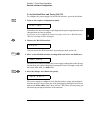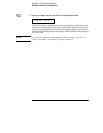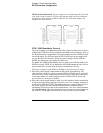
Chapter 3 Front-Panel Operation
RS-232 Interface Configuration
67
3
The power supply monitors the DSR line to determine when the bus controller
is ready to accept data over the interface. The power supply monitors the DSR
line (pin 6 on the RS-232 connector) before each character is sent. The output
is suspended if the DSR line is FALSE. When the DSR line goes TRUE,
transmission will resume.
The power supply holds the DTR line FALSE while output is suspended. A form
of interface deadlock exists until the bus controller asserts the DSR line TRUE
to allow the power supply to complete the transmission. You can break the
interface deadlock by sending the <Ctrl-C> character, which clears the
operation in progress and discards pending output (this is equivalent to the
IEEE-488 device clear action).
For the <Ctrl-C> character to be recognized reliably by the power supply
while it holds DTR FALSE, the bus controller must first set DSR FALSE.
RS-232 Troubleshooting
Here are a few things to check if you are having problems communicating over
the RS-232 interface. If you need additional help, refer to the documentation
that came with your computer.
• Verify that the power supply and your computer are configured for the same
baud rate, parity, and number of data bits. Make sure that your computer is
set up for 1 start bit and 2 stop bits (these values are fixed on the power
supply).
• Make sure to execute the
SYSTem:REMote
command to place the power
supply in the remote mode.
• Verify that you have connected the correct interface cable and adapters.
Even if the cable has the proper connectors for your system, the internal
wiring may be incorrect. The Agilent 34398A Cable Kit can be used to
connect the power supply to most computers or terminals.
• Verify that you have connected the interface cable to the correct serial port
on your computer (COM1, COM2, etc).


















